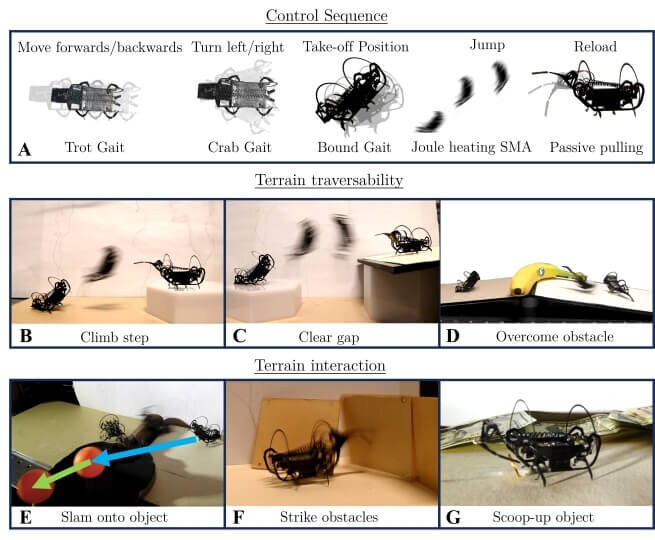It’s possible you’ll not know what a springtail is however man, these little issues can leap! Scientists have now copied the creatures’ leaping mechanism in a small robotic that might in the future discover locations that individuals cannot go.
Though they could appear like bugs, springtails are literally tiny six-legged hexapods that stay in – and feed upon – decaying natural materials resembling useless leaf litter.
Most kinds of them measure not more than about 2 mm in size, but once they sense hazard, they’re able to leaping to heights of as much as 62 mm (2.4 in) and over distances so far as 102 mm (4 in). What’s extra, they accomplish that inside a matter of milliseconds.
Springtails execute their wonderful jumps by way of a tail-like, spring-loaded appendage referred to as the furcula. It is ordinarily folded up beneath the physique and held below stress by a construction known as the retinaculum. When the furcula is launched from the retinaculum it snaps down exhausting towards the group, flinging the animal into the air.
A Harvard College group led by Prof. Robert J. Wooden has now created a mechanical model of that mechanism, and added it to an current 4.4-cm (1.7-inch)-long insect-inspired robotic referred to as the HAMR. Its title an acronym for Harvard Ambulatory MicroRobot, the bot makes use of its 4 ceramic-actuator-powered legs to scramble throughout the bottom at speeds of as much as 8.4 physique lengths per second.
In reality, if you happen to put foot pads on these legs, it could possibly even scuttle throughout the water’s floor.
The factitious furcula that was added to the robotic consists of a placing arm that’s held below the rear finish of the physique by a parallel linkage made up of tensioned shape-memory alloy actuators. When that arm is electronically launched, it whips down and strikes the bottom, propelling the robotic upward inside simply 14 milliseconds.
Harvard Microrobotics Laboratory
In lab checks, the two.2-gram bot managed a most horizontal leaping distance of 1.4 m (4.6 ft). Given the truth that the robotic measured 6.1 cm (2.4 in) with the added furcula, that distance labored out to 23 physique lengths.
Whereas that determine surpassed the leaping distance of any same-sized bugs, it was solely half as a lot as a beforehand developed leaping robotic of an identical measurement. That mentioned, the opposite robotic weighs 20 instances greater than the modified HAMR, making it far much less energy-efficient.
It needs to be famous that the HAMR nonetheless can additionally stroll prefer it at all times has. The leaping might turn out to be useful for duties resembling traversing gaps, going over obstacles, and even hitting lighter obstacles to maneuver them out of its manner.

Harvard Microrobotics Laboratory
Attainable future functions for descendants of the robotic might embrace the inspection of hazardous areas, trying to find trapped survivors in disaster-site rubble, and even the exploration of different planets.
A paper on the analysis was just lately revealed within the journal Science Robotics. You may see the robotic in springtail-inspired leaping motion, within the following video.
A springtail-like leaping robotic
Supply: Harvard John A. Paulson College of Engineering and Utilized Sciences


